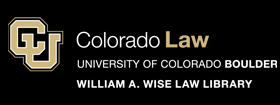Document Type
Conference Proceeding
Event Date
6-17-2005
Description
Presenter: Dale Block, Brooks Township Forest, MI
35 slides
Moderator
Caroline Byrd
Citation Information
Block, Dale, "SLIDES: Coolbough Natural Areas: Community Forest, Brooks Township, Michigan" (2005). Community-Owned Forests: Possibilities, Experiences, and Lessons Learned (June 16-19).
https://scholar.law.colorado.edu/community-owned-forests/6
Included in
Business Organizations Law Commons, Forest Management Commons, Land Use Law Commons, Natural Resource Economics Commons, Natural Resources and Conservation Commons, Natural Resources Law Commons, Natural Resources Management and Policy Commons, Property Law and Real Estate Commons, Public Administration Commons, Public Policy Commons, Recreation, Parks and Tourism Administration Commons, State and Local Government Law Commons, Urban Studies and Planning Commons


Comments
Community-owned forests may be the answer for some U.S. communities now confronting unanticipated and unwanted large scale land use changes – changes that could irrevocably change their local landscapes and quality of life. Across the country, millions of acres of private forest lands are being put up for sale as the forest products companies who own them find other, cheaper sources of supply. If, as is likely, purchasers divide and convert the forests to residential or other development uses, nearby communities face losing the critical economic, environmental, recreational, social, cultural, and aesthetic values and benefits those forests have traditionally provided.
Affected localities are urgently seeking alternatives, such as government acquisition of the land and its addition to existing state or federal forests, identification of private purchasers who will maintain forest uses and/or limit development intensity, the purchase of development rights on the properties, or negotiation of conservation easements. Increasingly, however, forward thinking communities are pursuing a more exciting – and challenging – option: acquiring the lands to manage them as community forests, now and for the future.
Community-owned and –managed forests can be found around the world, and are not a new concept. Some New England “town forests,” for instance were established nearly a century ago. The recent surge of interest in community forests in the U.S., however is unprecedented. In response, a three-day national conference was held in Missoula, Montana, in 2005, to bring together practitioners from around the country to explore issues, options, and experiences in community forest establishment, governance, management, and use.